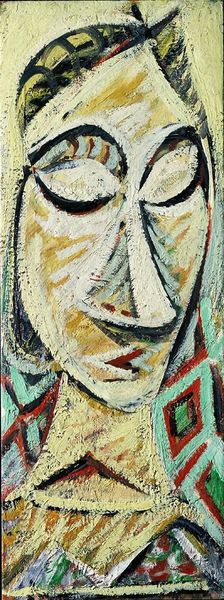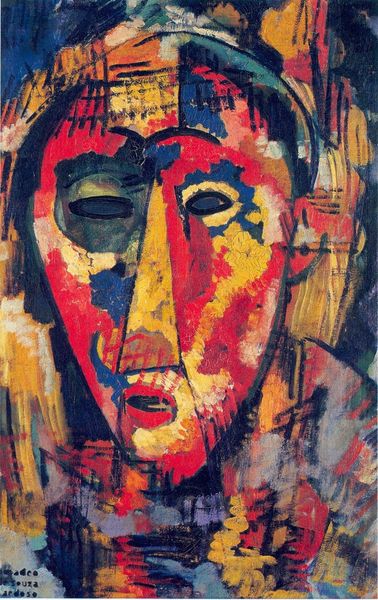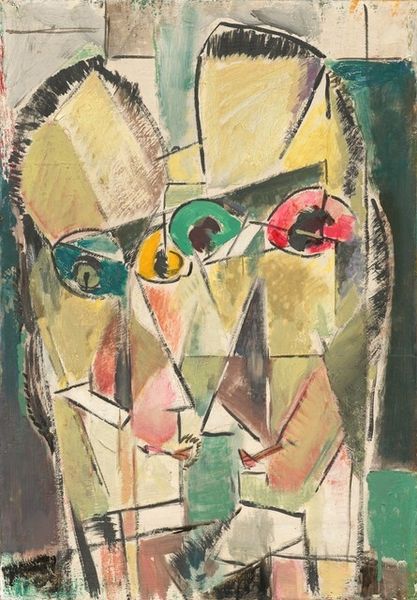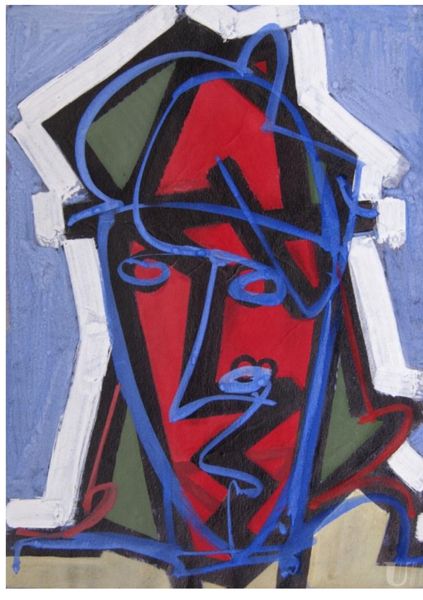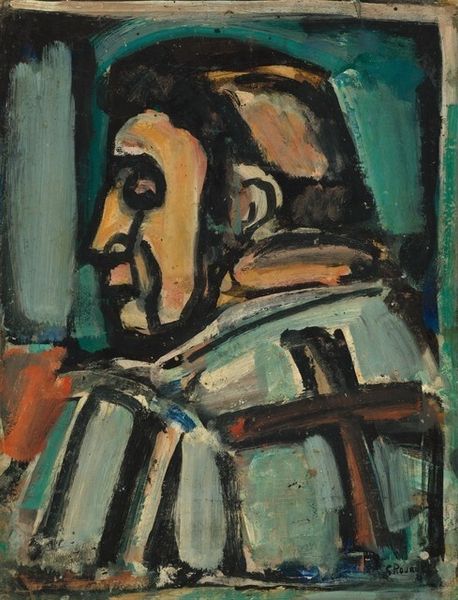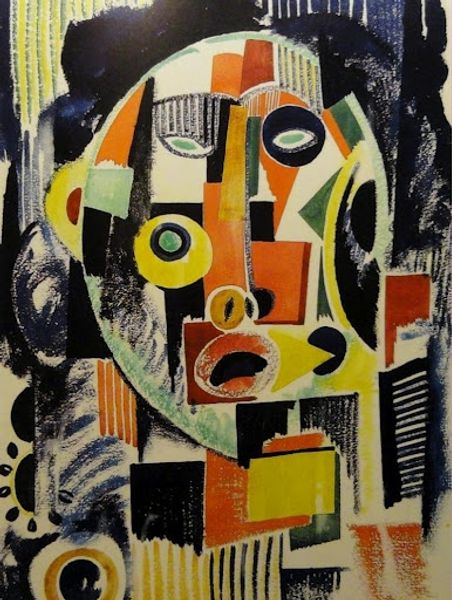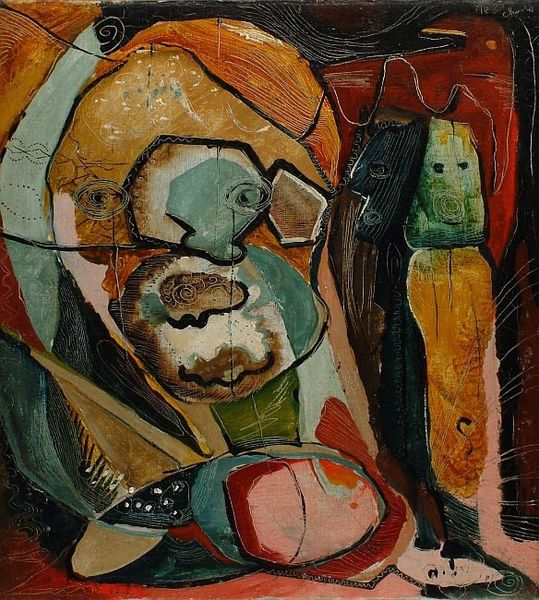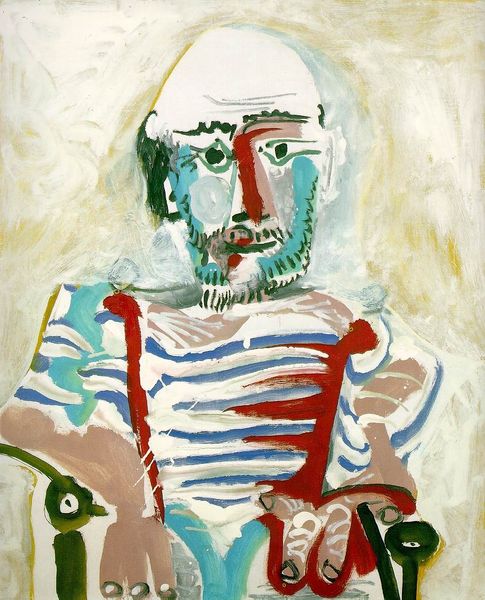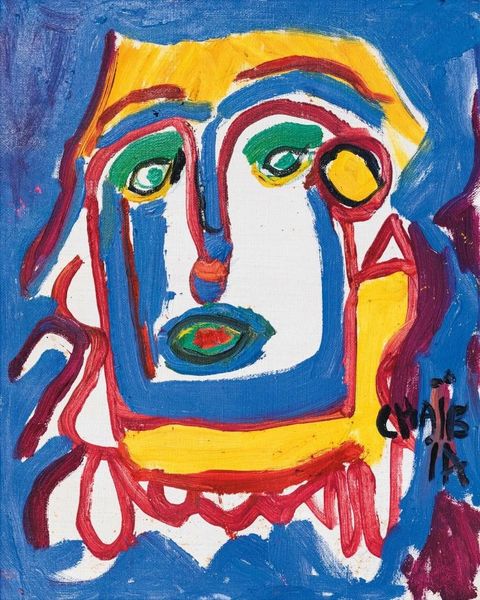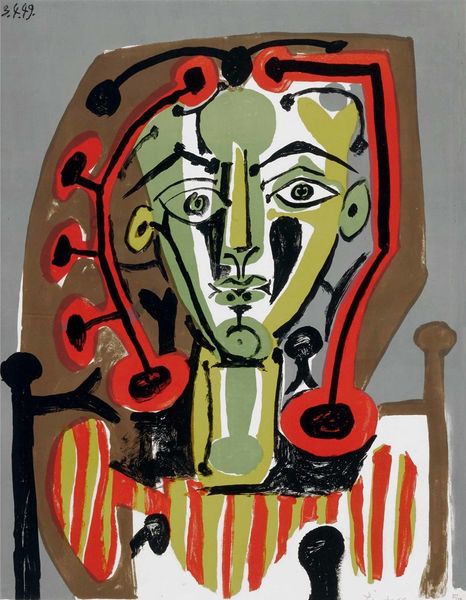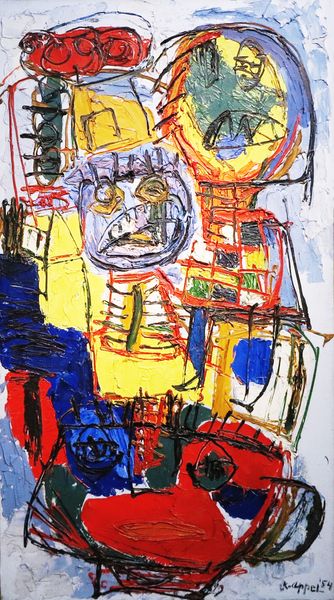
Copyright: Public Domain: Artvee
Arnold Peter Weisz-Kubínčan created this oil painting titled "Man's Face," though the precise date remains unknown. The fractured and abstract style brings to mind the Cubist movement, where artists like Picasso and Braque were dissecting and reassembling forms to challenge traditional representation. Weisz-Kubínčan was a Jewish artist from former Czechoslovakia who was killed in the Holocaust. In this context, the painting takes on a new layer of meaning. Could the fragmented face reflect the fractured identity and the dehumanization experienced by Jewish people during that era? Was the artist commenting on the way his community was perceived and treated by the dominant social and political forces? Further research into Weisz-Kubínčan's life, along with the cultural and political climate of Czechoslovakia in the 1930s and 40s, could shed light on these questions. We need to consider the institutional history of museums and galleries, and how Jewish artists were included or excluded. It’s in those contexts that the meaning of art is often revealed.
Comments
No comments
Be the first to comment and join the conversation on the ultimate creative platform.
